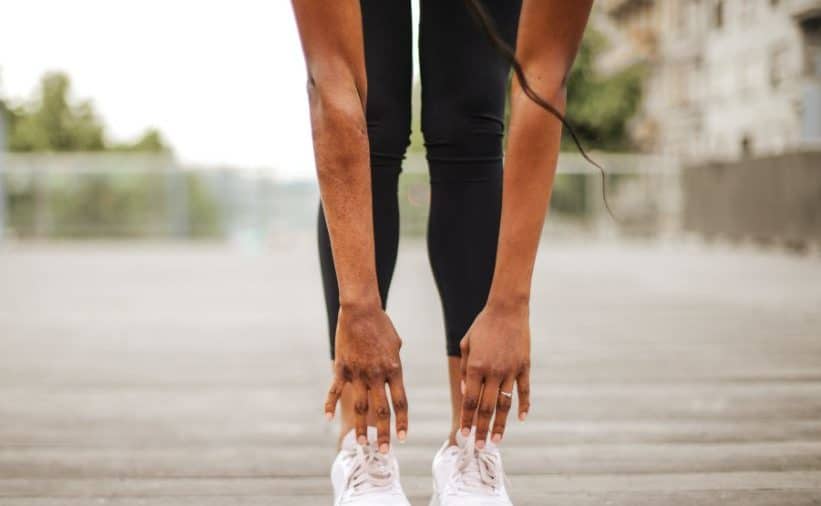Welcome back to the Running Through Lockdown blog series. Todays focus: Shin splints
What actually is it?
The term itself, ‘Shin Splints’ is well-known, but pretty vague and non-specific, and is commonly used by runners to describe any lower leg pain brought on by exercise. For that reason, let’s put the term in the bin (for now), and focus on another, albeit slightly medical term – Medial Tibial Stress Syndrome.
To break that down; medial just means inside, the Tibia is our large leg bone, and stress refers to the what is happening to the Tibia.
As such, Medial Tibial Stress Syndrome (MTSS), can be defined as exercise induced (stress) pain over the lower, inside portion of your large lower leg bone. It often effects both legs, and accounts for around 6-17% of running injuries (1,2).
How and why does it happen?
The exact cause of MTSS is still unclear (3). One proposal is pure bone stress. Bone, like other soft tissue, has a capacity to tolerate load. The image below nicely represents what we mean by ‘capacity’ and ‘load’. Just say we usually run for 30 minutes on grass, perhaps on an oval. By running for 45 minutes, on concrete, up a hill, I have increased my load in three different ways.

When we place increased load on a bone, we place more stress on it. If we don’t then give the bone ample time to recover and repair, before loading it again, it can react.
Another idea, is that the bony stress is caused by soft tissue (muscle) attachments (4). The more we use our muscles when we exercise, the more they, and other soft tissues in the lower leg, can pull on the bones that they attach onto. In the case of MTSS, the soft tissue pulling can cause irritation and inflammation.
The result? That classic vague, dull ache through the inside part of the shin bone – “Medial Tibial Stress”. Think of the pain as your body’s way of telling you that it’s a bit stressed out!
What does it feel like?
The pain may present as:
- Mild:
- Gradual onset of dull pain/ache in the front/inside of shin, that may subside with a warm-up
- Moderate:
- Pain that worsens with activity – running or jumping; coming on earlier and lasting longer
- Severe:
- Pain that persists during activity, after activity and with rest, with pain lasting for days after the activity
If your pain doesn’t fit this typical profile, MTSS is less likely to be the cause of your pain (3), for example:
- Is located towards the outside of your shin
- Is very local (can pinpoint with a fingertip)
- Subsides within minutes of stopping activity, or at a lower intensity
A thorough history and physical examination, performed by your physiotherapist, can help to differentiate MTSS from other lower leg injuries, such as stress fractures or compartment syndrome.
Am I at risk?
Risk Factors (2,5,6) | |
Modifiable | Non-Modifiable |
Training errors: – Intensity – Pace – Distance – Terrain | Younger age |
Footwear | Females > Males |
Orthotics | Previous lower limb Injury |
Muscle strength | Activity history |
Running mechanics |
|
Your physiotherapist can work with you, to identify non-modifiable causes of the development of MTSS, and individually manage your modifiable risk factors.
What to do?
Here are some helpful tips:
1. Load Management (7,8)
- Depending on the severity, a nice place to start is to reduce your frequency and intensity by 50%.
- If it’s sorer, you may need time off running (7-10 days at a minimum)
- Try to avoid hills, uneven surfaces or very firm surface
2. Strength & Conditioning (7,9)
- Calf muscle strengthening (along with other side and back lower leg muscles) for foot and ankle control
- Jumping and plyometric exercise
- Hip and low back control and stability
3. Ice (10)
- Helpful pain relief
4. Running technique assessment (11)
- Optimising running gait
As always, if you have questions or comments, post in the comment section below!

